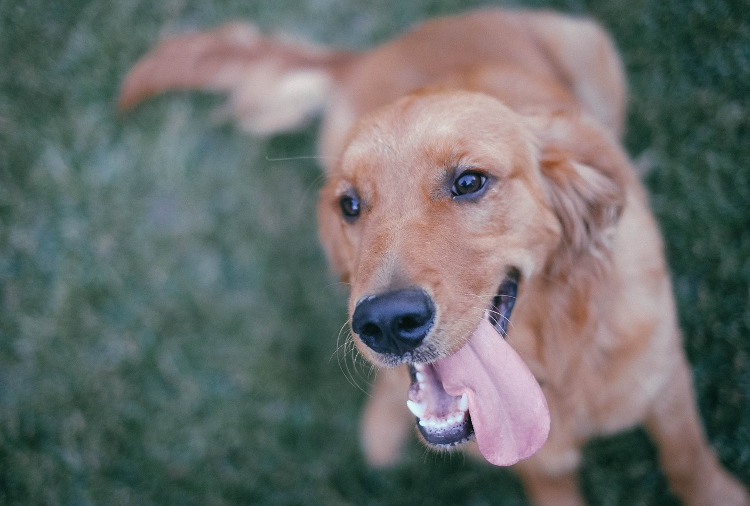![]()
Let’s face it, the hind end (bums, if you will) are a gross subject! But your pets’ hind end can be a source of discomfort to them if the little sacs present besides the anal opening become blocked. These anal sac blockages (more commonly called anal gland impaction or anal sacculitis) can be a source of discomfort to the pet and need to be relieved in a timely fashion. If severely affected or if not dealt with right away, the anal sacs (also popularly called anal glands) can become infected or have other problems.
What are Anal Sacs (or Anal Glands)?
Anal sacs are 2 small sacs that open in to the each side of the pet’s anus and release a liquidy, oily secretion. It is often regarded as a fishy smelling secretion. They are located between the internal and external anal sphincter muscles, one on each side of the anus at four and eight o’clock position on a clock. When anal sacs are functioning normally, it is hard to notice that they exist. In fact, many pet owners may not even know of these structures if they haven’t had a pet that is affected by problems of the anal sacs. It is thought that these sacs may be for voluntary scent marking or a self defense mechanism in animals (think of what a skunk does when scared or stressed!) but some pets lose the ability to empty these sacs naturally, thus leading to anal sac impaction (or, anal gland impaction).
In case if you are wondering, humans do not possess these sacs and are not affected by any associated problem!!
Causes of Anal Issues
There’s no way to predict discomforting or painful anal sac disorders. Besides the most common cause being anal sac impaction (or blockage), other possible causes are infection, and rupture with drainage through the perianal skin. Presence of perianal infections, trauma, allergies, and inflammation can lead to anal sacculitis (inflammation of the anal sacs) by compression or blockage of the narrow duct (tube) leading from sac to surface.
It’s possible some environmental allergies or food hypersensitivities can heighten anal gland issues as well.
Anal Sac Impaction Signs in Dogs
Specifically, what is an anal sac impaction in pets?
It is just how it sounds. If your pets’ anal sacs get blocked or impacted, and are unable to secrete out the anal sac oily, liquid being produced in them; it is termed as an anal sac impaction. For unknown reasons, anal sacs in dogs and cats produce thick semi-solid material, making them more prone to impaction due to their inability to pass the material through the narrow duct to the outside. This may be the cause of infection, itchiness, pain, and inflammation and in severe cases the material even break through to the skin’s surface.
Anal Sac Impaction Signs in Cats
Cat anal glands can also become impacted, inflamed, or infected. Just like for dogs, if a cat fails to express their anal glands regularly, material can build up and turn into a waxy hard impacted piece of “sludge”, which needs to be emptied by a trained professional.
Signs: The most common symptom is scooting i.e. dragging of the bum on the floor, carpet or grass. Other causes of scooting can include intestinal parasites, infection of the skin around the anus, and allergies.
Here are the common signs associated with anal sac problems in cats and dogs:
- Frequent scooting of the rear end
- Licking or biting at base of the tail
- Licking or biting of the anal region
- Discomfort or difficulty in defecation
- Vocalization while producing stools
- Blood on surface of feces and/or around the anus
- Chasing the tail
- Tail between the legs
Prevention
As we do not know why some pets get anal sac problems while others don’t, there are no known prevention tips. Being aware of these little structures and the symptoms associated with the problem is usually adequate. If your pet suffers from such symptoms, talking to your veterinarian will help assess the need for a treatment of the anal sacs. Groomers are usually quite adept at emptying anal sacs as well, once your vet has identified the problem.
By pursuing timely treatment, increased pain or discomfort and chance of infection can be prevented. If anal sac infection is noted, treatment of the infection may need to be pursued by your veterinarian.
Treatment and Relief
Anal sac impactions can be resolved by manually expressing the anal sacs by gently squeezing or milking out the blocked material from the anal sac duct and the sac itself. The problem can be recurring in some pets and they may need frequent anal sac expressions every few weeks. Other pets may need 1 or 2 anal sac expressions before recovering completely. The technique of anal gland expression usually does not determine the chance of recurrence.
The procedure is best left to professionals, as the pets’ hind end is a sensitive area, especially when symptoms are present. A trained vet professional holding the pet while another expresses the sacs makes the procedure safe for everyone involved, including your pet. Most pets do not like or tolerate the procedure being performed by one person. Some pet owners may learn to express the anal glands at home but it is advisable to learn and practice the procedure with your veterinarian before doing so, if you are so inclined. For pets with recurrent anal gland impactions or anal sacculitis, the timing of future expressions usually depends on monitoring for the specific symptoms they exhibit related to anal sac discomfort, which you can learn by simple observation of your pet.
Creative Commons Attribution: Permission is granted to repost this article in its entirety with credit to VetDERM Clinic and a clickable link back to this page.

Dr. Jangi Bajwa is a Board certified veterinary dermatologist at VetDERM Clinic in Surrey BC. He is also the dermatology feature editor for Canadian Veterinary Journal. Dr. Bajwa’s special interests include otitis and allergic disease in pets; as well as helping improve quality of life of pets and their families.



 by
by